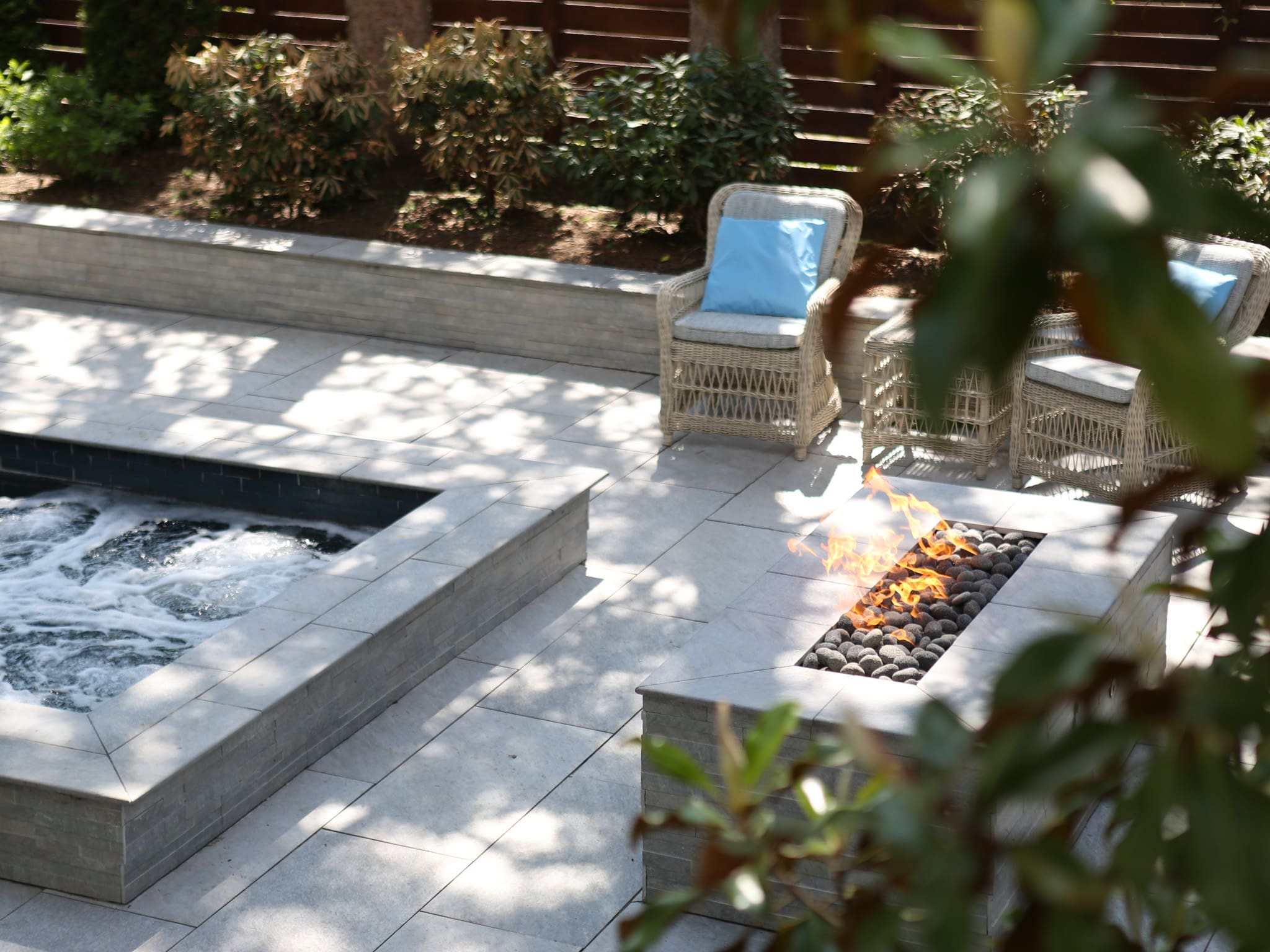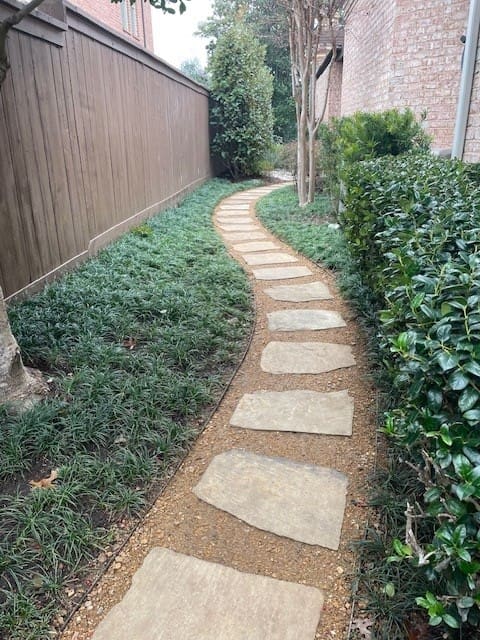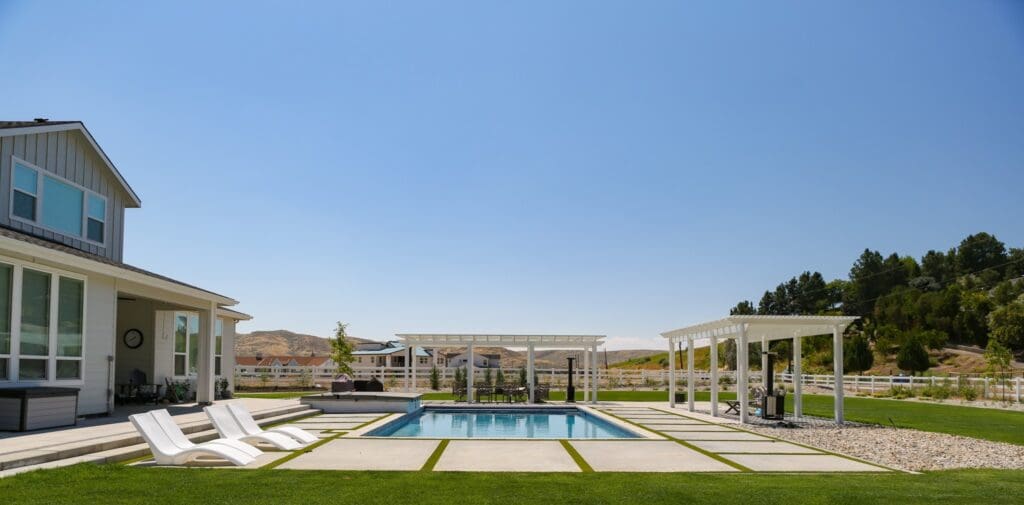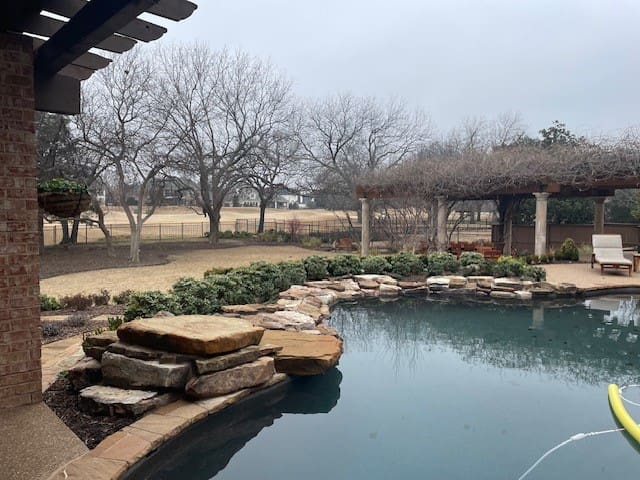
In times when your clients might be less likely to spring for a major landscape project or if their budget is on the smaller side, offering a phased project can be a good compromise.
“When the scope exceeds the client’s budget at the time of installation, and the client values the quality your company provides, phasing is optimal to avoid losing the project,” says June Hawkins, senior designer with Milosi, based in Hendersonville, Tennessee. “Remember to account for the costs of price increases, additional deliveries, mobilization, and address these considerations as soon as phasing becomes an option to avoid surprises.”
Selling a Phased Approach
Neil Bales, president and CEO of LandPatterns, based in Dallas, Texas, says 75% of his clients look for designs within their projects that can be phased.

“We propose a Master Plan for our design options most often, explaining to the clients that we’d like to know all their desires, wants, features, etc. that they’re looking for when it comes to their outdoor spaces,” Bales says. “We explain to them that planning for everything at the beginning will allow for a more cohesive design, as well as implementation process. This then allows us to design everything while factoring in the best way/process to phase projects in so as to be the most cost-effective and efficient for the clients.”
Hawkins says 50 to 65% of their clients choose phased designs. She says this is more common with estate properties.
“The decision for mid to small projects can vary, and in cases where jobs commence during late fall or winter, we strategically phase out plants susceptible to weather damage,” Hawkins says.
Hawkins says they proactively discuss budgets during initial client meetings and if the scope exceeds the budget, they will design and bid on the project, exploring phasing options to eliminate rework.
Jake Koppes, designer and project manager for Franz Witte, based in Nampa, Idaho, estimates that around 25% of their client base is looking for a master plan they want to phase out.
“It’s pretty common that after talking through the project with a potential client that I can tell if they’re looking for something that might be outside of their budget,” Koppes says. “When I sense that, I will suggest looking at a phased approach.”
Hawkins, Koppes and Bales all expect phased designs to become more common as budgets tighten.
“I believe clients are always wanting to find ways to save dollars and/or implement their landscape aspirations as they can afford,” Bales says.
Phasing Logistics
These types of projects don’t tend to have a set number of phases. This is mostly determined by the client’s requirements and budget. Bales says it is more important to hear and understand the client’s intentions.
“Listen intently to your client’s needs,” Bales says. “Work to solve their desires/issues/needs deliberately through thoughtful creativity and efficiency.”

Hawkins says they aim for a single-phase installation for small-budget projects to eliminate additional mobilization costs.
“I’d suggest maybe 2 or 3,” Koppes says. “With the first phase focusing on the essentials for an enjoyable, functional yard.”
Hawkins says most projects involve two phases unless it’s an estate property, which is always undergoing assessments for renovations, additions and upgrades.
Similarly, the pause between phases depends mostly on the client’s budget and when they are ready to commit to the next phase. Hawkins says for their clients, there is typically six months to a year between phases.
“We’ve had projects that have been phased in over a few weeks to a few years,” Bales says. “Really, it just depends on the client’s needs and expectations, along with their budgets.”
Advice for Others
The trickiest aspect of phased landscapes is avoiding undoing the previous phase’s hard work.
“Planning is crucial for services involving drainage, elevation change, lighting, irrigation, gas, and water,” Hawkins says. “Depending on property size and potential for future projects, our landscape architect/designer ensures maximum flexibility through planning for future phases. Incorporating minimal-cost items such as sleeves in the plan can prevent costly demolition and distinguishes between good and great design.”

Koppes says some of the elements designers should think through include future utilities and routing irrigation for future fixtures and access.
“Always look at access,” Koppes says. “Don’t cut yourself or other contractors off. Be cognizant of the client’s budget and that they shouldn’t pay for something twice because of poor planning. In the first phase, focus on the needs of the property. What can you do to ensure the client has a functional and enjoyable yard.”
However, Bales notes you can’t always avoid causing damage depending on what was installed in the first phase.
“Through a master plan, I’m able to tell clients if we do this portion first, before this yes you may get the desired outcome now, but you need to be aware there may be some cost to rework this later when you proceed to this other portion/phase of the project,” Bales says. “Clients then are left with the information to make the best-informed decision.”
While technically anything can be added at a later phase, lighting, grill islands, pergolas, small water features, and landscape beds with additional irrigation zones are some of the easier items to add later with the least amount of disruption.
Bales says he will advise clients on what can be installed in a later phase so they can spend their money wisely and still get what they want.
“It’s my job to arm them with all the information necessary for their projects with a complete design and knowledge of implementation,” Bales says. “That’s what makes design/build firms so valuable is our understanding of not just project design but what can wait till later, costs associated with those types of decisions, etc.”



